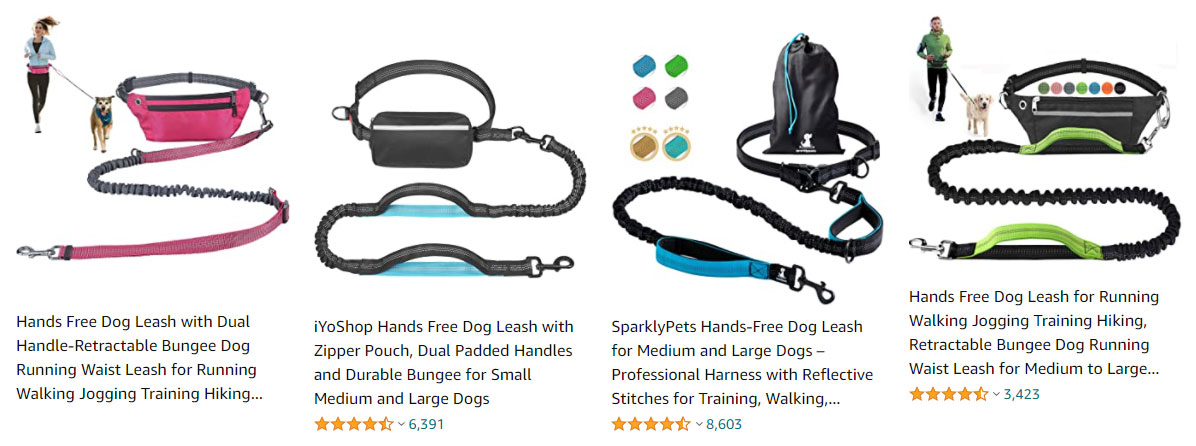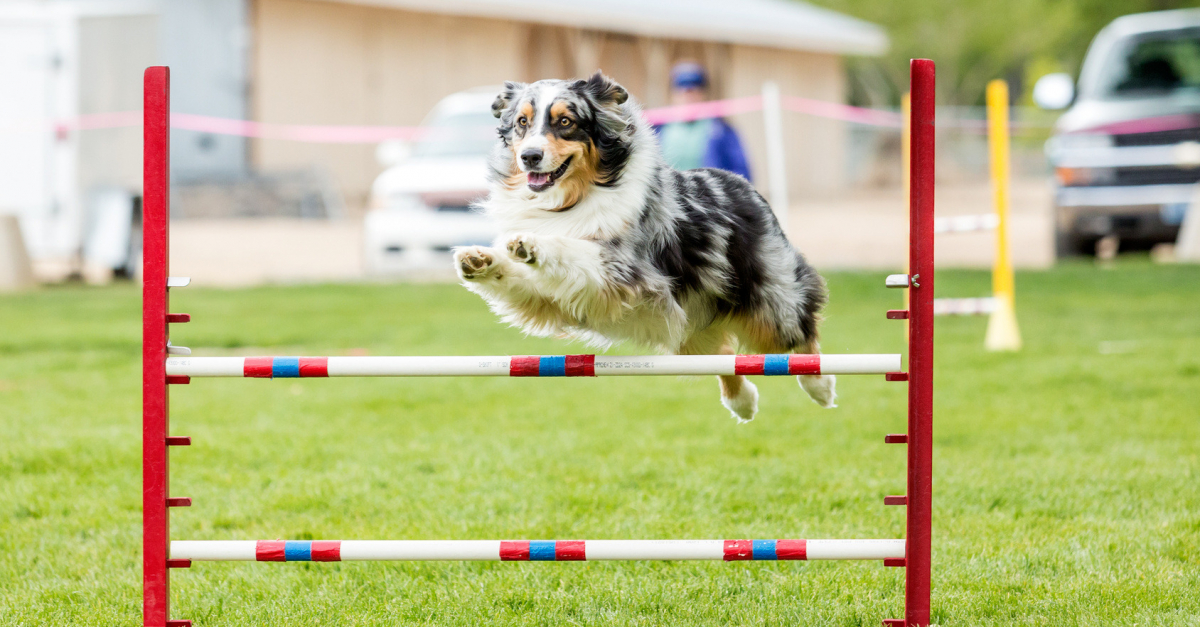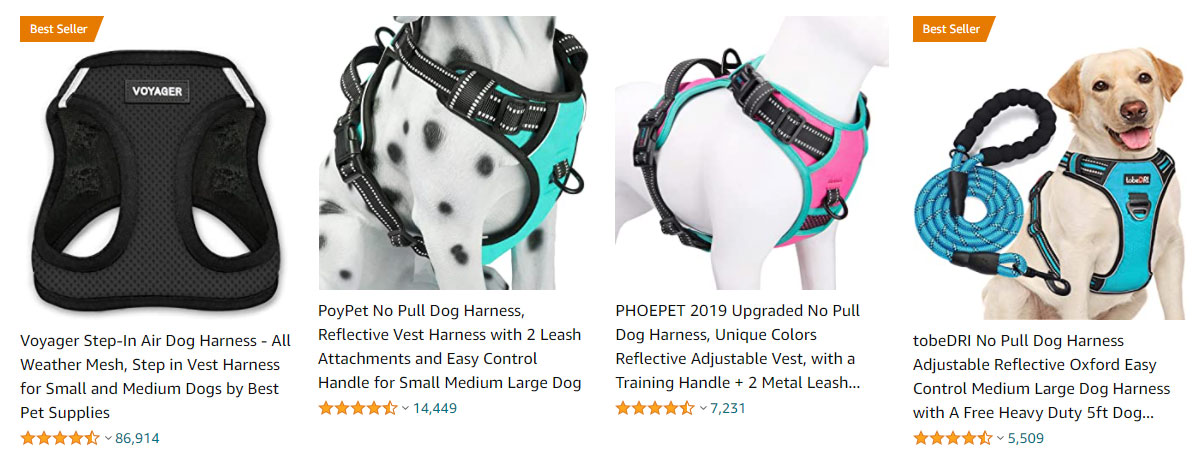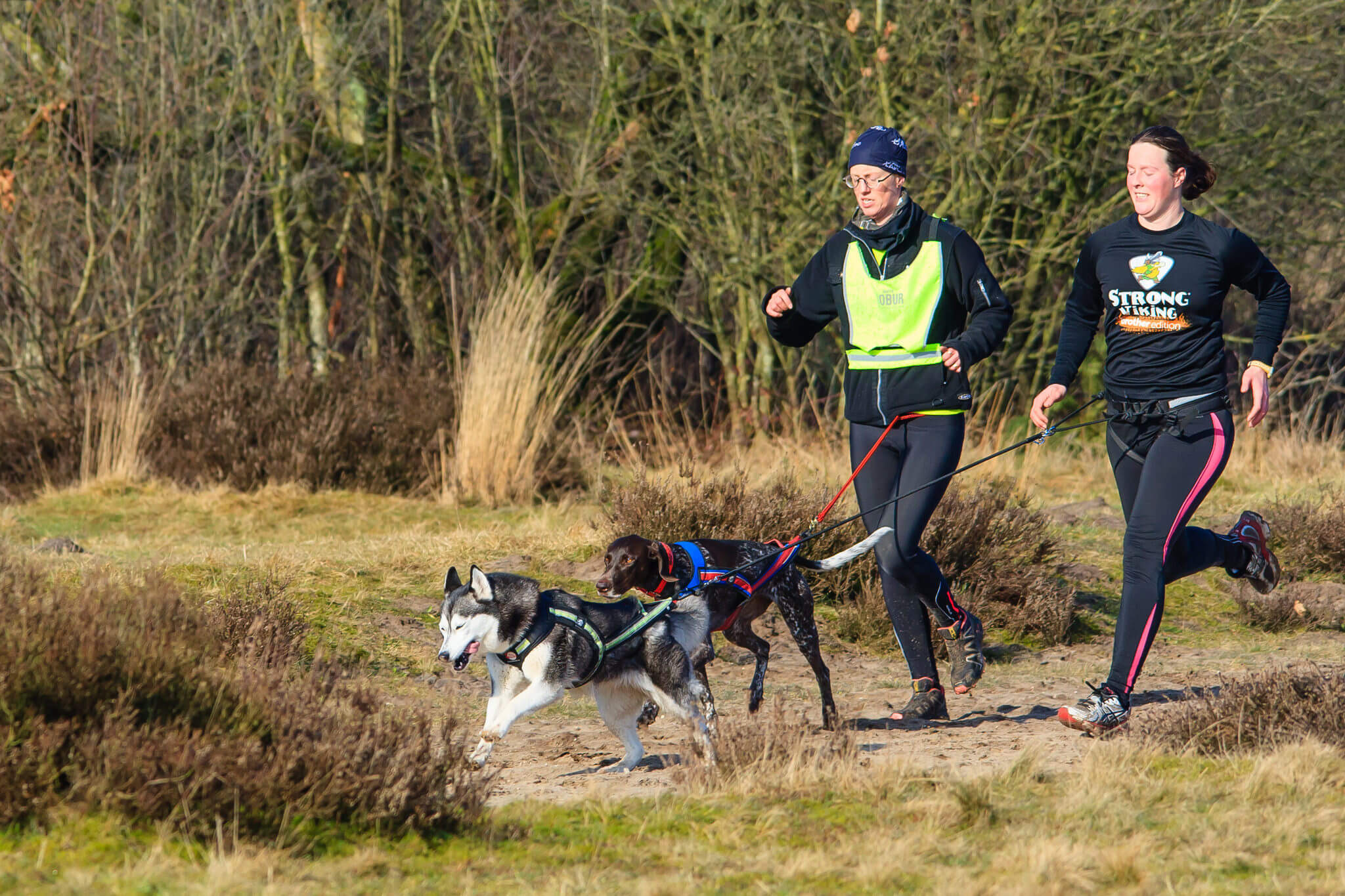Dog sports
Do you want to practice a dog sport? Do you want to start a regular physical activity and involve your doggie? Whether you have stamina or not, whether you have a small or a large dog, whether it is young or old, there is bound to be a sport adapted to your partner!
You will find here all the information about the different dog sports: the importance of such an activity, the sports to be favored or on the contrary to be avoided, the recommendations for a good start and finally an overview of the breeds that are particularly suitable to accompany you during your daily sports outings.
The importance of doing sports with your dog?
It's no secret that regular physical activity is good for your health, your mental balance and also excellent for your psychological balance. This has been proven many times and all sportsmen and women can corroborate this information.
And what has been proven for humans is also proven for dogs!
So if you are a sportsman, whether you are a professional, an amateur or simply a Sunday jogger, and you have a dog: make him participate!
And if, on the other hand, you are not really athletic but you have a dog that just wants to be, then let me list the many benefits that regular practice of a dog sport will involve.
• Practicing a dog sport will strengthen the master/dog relationship. The sports sessions will allow you to share a special moment with your dog.
• Practicing a dog sport will allow, in addition to exercising yourself, to exercise your dog regularly. Depending on the sport chosen and on your dog's expectations, it will be to fulfill a need for physical and/or mental and/or olfactory expenditure. In short, nothing is better to meet the daily needs of a doggie.
• Practicing a dog sport will also allow you to set up a certain "wellness" routine that is important to maintain your dog in good physical and mental health.
• Practicing a dog sport will also and above all allow you to reinforce the cooperation you will have with your dog. Indeed, a dog that is regularly stimulated and with whom you share special moments will be much more likely to cooperate in education and in daily life in general.
• Practicing a dog sport will considerably reduce the risks of behavioral problems, often caused by a cruel lack of daily stimulation and exercise.
• Finally, the advantage of practicing a dog sport lies in the fact that no matter what breed of dog you have, whether it is small, big, young or old, there will always be a sport practice adapted for it and for you.
Yes, because when we think of "dog sports" we often imagine that we need a muscular and enduring dog and a dynamic and athletic master... But not at all!
Any person and any dog can start a regular physical and/or mental activity without necessarily becoming a pair of high level champions! The trick is to find THE sport(s) that will best suit your partner and that will allow you to spend a pleasant, educational and stimulating time together!

When and how to start a dog sport?
First of all, the most important thing is to discuss with your dog's veterinarian the different sports he can take part in. Indeed, we will see it later but some sports will not be adapted to such or such dog, such or such breed, such or such size, etc.
This appointment will also allow you to assess your dog's possible physical limitations so as not to aggravate his condition or cause complications later on.
Then, if you have a young dog, don't rush things by starting an intense physical activity at a young age, wait until the end of its growth to avoid compromising its good development.
Indeed, when you have a puppy or a dog under one year old, it seems that there are a lot of other activities to do and propose to reinforce before really and seriously starting a regular physical activity.
Thus, it is strongly recommended to wait until your dog is at least 13 months old to gradually start a dog sport. However, you should know that for some breeds, especially large dogs, the end of growth is closer to 2 years. Don't hesitate to ask your veterinarian for advice.
And speaking of progression, this is also a recommendation not to be taken lightly! It is inconceivable to start a sport activity with your dog intensively without having trained and warmed him up first.
Whether it is for any discipline, a physical, mental or olfactory activity, it will be essential to start with simple exercises and then to make them more complex, whether it is through duration or intensity.
Put yourself in your dog's shoes, it would seem impossible to start running the New York marathon, wouldn't it? Well, it's the same thing for your dog.
Let's take the example of a discipline such as agility: we will not propose a whole course to a dog that has not been used to and has not familiarized himself with all the obstacles one by one and in a progressive way.
Which dog sports should I choose/avoid?
In concrete terms, all dog sports are accessible, only if they are offered in a way that is adapted to the age, morphology and physical abilities of each dog.
Afterwards, there is of course a preference aspect to this or that sport. The goal is not to undergo the activity but to enjoy it and appreciate it as much as possible. Here is a non-exhaustive list of dog sports, which are for me the easiest to set up but also the most popular and accessible for many dogs:

Agility
Agility consists in running a course with different obstacles: jumps, tunnels, tilts, slaloms, etc. This activity is particularly appreciated by dogs who need to spend a lot of energy but also by masters who want to sweat as much as their dog.
Indeed, doing agility with your dog does not only consist in watching him running the course, the goal is to accompany him for each obstacle, with more or less distance. It is therefore necessary to run to motivate and guide your dog as you go. It is an activity which requires a lot of physical endurance but which also makes it possible to work the dexterity of the dog, its flexibility but also its intellect.
The agility should imperatively be initiated at the end of the growth of the dog, in particular for all the obstacles of slalom or jumps!
The only disadvantage of this sport practice is without any doubt the necessity to have material and a consequent space to install the course... and the agility courses are generally very expensive. However, nothing prevents you from building your own obstacles (with two chairs and a broomstick you can do miracles).
You can also (and this is what many dog owners do) join an agility club in order to start this activity with a professional supervision and why not progress to the point of participating in competitions.
The only breeds of dogs that will not be able to run an agility course will be large dogs that may have problems of hip and elbow dysplasia in particular. These dogs will have to be careful with their joints and the jumps, speed and intensity that this discipline requires will not necessarily be adapted.
Running
Here are grouped all the sports related to the traction of the master: cani-vtt, cani-cross, cani-trottinette, cani-randonnée, etc. These are sports that are particularly appreciated by medium-sized dogs with very good endurance, such as many hunting dogs for example, or dogs that were originally sled dogs (Husky, Samoyed, etc.).
Thanks to these sports, the dog's stamina and musculature will be strengthened and, above all, it will be able to exercise physically. You don't need much equipment except a harness adapted to the traction for your dog so that he doesn't hurt himself (never a collar for traction), a bike or a scooter if you opt for the cani-vtt or the cani-trottinette or a comfortable belt with a shock absorbing leash if you opt for the cani-cross.
The particular recommendations for these dog sports will be on the one hand to propose progressive trainings to the dog (and to you at the same time), to practice them when the climatic conditions are adapted (one does not run with his dog when it is 30°C of course) and also to propose races on adapted grounds (one will avoid running too long on tar for example).
Tracking
Finally, there is a sport, an activity, that you can do with all dogs, all breeds, all ages and all morphologies: these are all activities related to olfactory stimulation!
Indeed, the first sense developed in the dog being his sense of smell, any dog will appreciate following tracks, looking for treats or a human for example. In addition, tracking is also suitable for owners who are not very athletic and for dogs that are not very fit for intense physical activity!
However, tracking will not be the activity of choice for all dogs with a crushed nose (bulldog, boxer, etc.). However, even if they don't excel at it, that doesn't mean they won't enjoy it. On the other hand, all tracking-related activities will be particularly appreciated by any dog originally selected for hunting.
Since many hunting dogs are clearly out of work and no longer hunt with their owners, tracking activities will fulfill their need to follow tracks and their natural instinct (sometimes very developed for some) for searching.
Finally, the advantage of all tracking activities is that they do not require any particular equipment or investment. A scent to follow, some treats to give and you are ready to start a session. Example of dog sports related to olfactory stimulation: mantrailing, nosework, cavage, tracking.
To summarize
Sheepdog breeds (Border Collie, Australian Shepherd, etc.) will generally enjoy all dog sports, but you can make them very happy if you offer them activities that are in line with their natural instincts: herding or treibball for example.
Hunting dog breeds, like sheepdogs, will enjoy all dog sports, especially those related to running and searching. Sled dog breeds (e.g. Husky) will enjoy more pulling sports, of course.
The less "sporty" breeds that belong for example to the group of companion or hobby breeds (e.g. Poodle) will appreciate, at their level, all activities related to learning tricks, etc.
But once again, each handler/dog pair will have its own preferences and its more or less developed abilities for such or such dog sport. The key is to find the right sport that suits both the dog and the owner.


